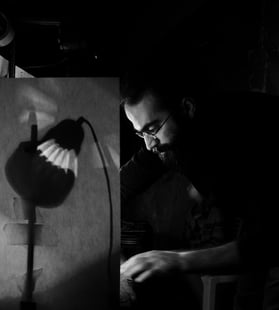

ANIMAFEST SCANNER IX | SYMPOSIUM FOR CONTEMPORARY ANIMATION STUDIES | PANEL 1 GLOBAL ANIMATION AND ITS HISTORY - TRIBUTE TO GIANNALBERTO BENDAZZI
Paulus Hector Mair’s De arte athletica as Pre-cinematic Animation - Charalambos Margaritis (Special Teaching Staff, Department of Multimedia and Graphic Arts, Cyprus University of Technology, Cyprus)
PANEL 1: GLOBAL ANIMATION AND ITS HISTORY – TRIBUTE TO GIANNALBERTO BENDAZZI
TEATAR &TD
07/06 TUE 14:30-15:00
Building on George Sifianos’ analysis of the friezes of Parthenon and Marie-Thérèse Poncet’s approach of mediaeval illustrations as forms of animated films in a pre-cinematic era, this presentation studies in a similar way the illustrations of Paulus Hector Mair’s monumental two-volume Renaissance manuscript Opus amplissimum de arte athletica (dated circa 1540). The manuscript was a compendium of techniques which Mair found in his extensive collection of Fechtbücher (German mediaeval martial art manuals). It was intended as a complete Renaissance martial arts manual and was divided in several parts, each of which provided detailed illustrations by Jörg Breu the Younger accompanied by text descriptions on how to fight using various weapons. The presentation begins by briefly discussing the historiographical issues (as pointed out by Bendazzi, Crafton and Darley) that arise when studying, through the lens of animation studies, pre-cinematic works of art which share similarities with animation (such as the subject of this study). It proposes a theoretical framework which may help overcome anachronisms and similar theoretical missteps when identifying ‘forerunners’ of animation. The presentation then discusses the first part of Mair’s book, which is composed of 120 illustrations depicting a step-by-step guide of sword fighting techniques. Mair’s fascinating story behind the compilation of this manuscript is briefly presented and this first set of images is analysed as a set of keyframes for an animated film. The way in which their presentation follows a structure similar to the one used to create movement in an animated film is shown. Following Sifianos’ process on reconstructing the hidden movement in Pathenon’s friezes, the hypothesis of this presentation is further demonstrated by a reconstruction of the in-betweens of the movement suggested by the illustrations.
Charalambos Margaritis is a graduate of the Beaux-Arts de Paris. He is an animator and a visual artist. He has presented artworks and films in various exhibitions and festivals around the world. He lives and works in Paphos, Cyprus, where he co-founded in 2015 the Kimonos Art Center. He directs Kimonos Animation Studio and serves as an artistic director of the international animation festival The Animattikon Project. He is member of the Special Teaching Staff at the Department of Multimedia and Graphic Arts of the Cyprus University of Technology, where he teaches Animation, Art History and Drawing. He is a PhD candidate at the same department. His research focuses on nonlinear narrative structures in animated film.


